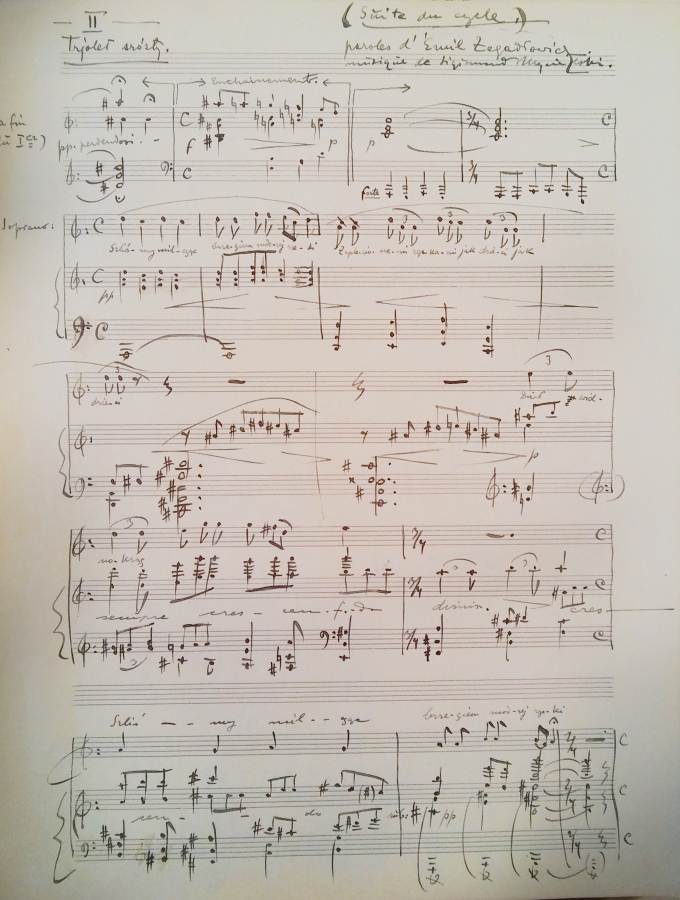
Triolets for soprano and piano to words by Emil Zegadłowicz (1928–1929, rev. 1931)
dedication: –
duration: ca 12’
manuscript: Zygmunt Mycielski Archive, Manuscript Department, National Library, no. IV 14313 akc. 020704
premiere: Paris, 17 March 1931, Maria Modrakowska – soprano, Susanne Astruc – piano (one of the Triolets, no other information available)
I. [How strangely my violin quivers today]
II. [We were walking, silent, along the bank of a deep blue river]
III. [My mouth is hungry for your lips]
A triolet is a stanza poem of eight lines with a characteristic two rhyme pattern and repeated lines – line one is repeated as line four and seven, line second as line eight: ABaAabAB (cf. Słownik języka polskiego, sjp.pwn.pl, accessed: 9 October 2022). Such poems, from Emil Zegadłowicz’s collection Imagines (1919), were set to music by Zygmunt Mycielski in the late 1920s. The structure of the poems was reflected in the music – the repeated lines had similar musical setting (although in different tonal centres).
The first triolet begins with an extended introduction with an increasingly dense texture (reflected in the notation of several fragments in three systems). It is tonally unstable – after two bars the composers abandons key signatures, introducing a number of chromatic changes as the piece progresses. The melodic phrases of the instrumental prelude are then taken up by the soprano. Much more transparent is the second triolet, in which a calm, even, marching movement of crotchets becomes a musical illustration of the contents of the poem. It is contrasted in terms of tempo and expression with the third triolet, which considerably enlivens the whole and vividly closes the cycle. The various elements are bound together by a pendular movement of triplets in the piano part, highlighting of passages of sevenths as well as chords of fifths in the lower register. The songs resemble the style of Zygmunt Mycielski’s first compositions consulted with Karol Szymanowski (see Juvenilia).